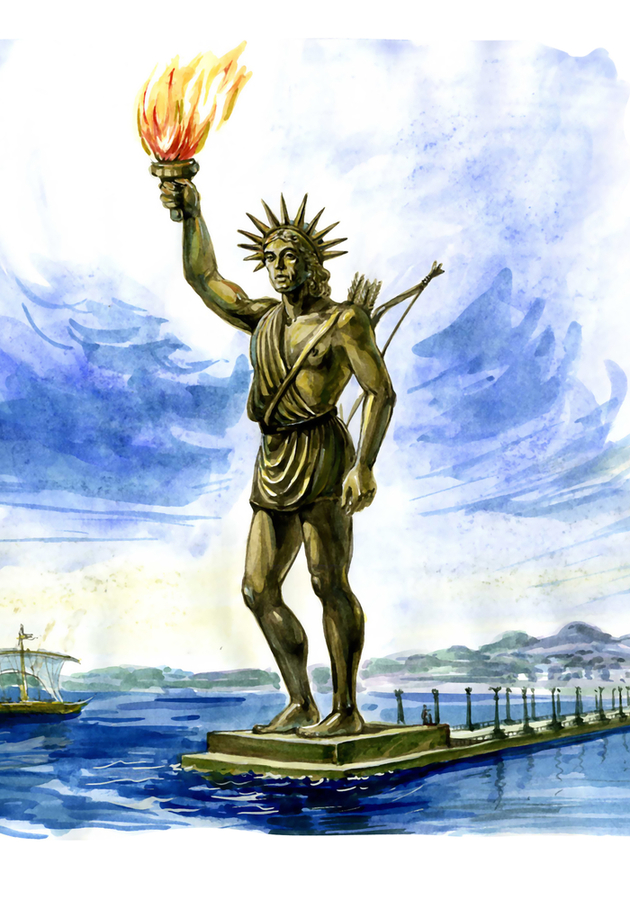For decades, the name of the Sackler family, which in 2015 Forbes had listed as one of the twenty richest in the United States, had been associated with art museums, universities, and medical facilities around the world. Sackler Institute of Graduate Biomedical Sciences, Sackler Center for Arts Education, and Sackler Wing at the Metropolitan Museum of Art are just some institutions that carry the name of this family. However, in the public mind, the Sacklers are no longer associated with art, science, and philanthropy but with the pharmaceutical company Purdue Pharma, which, in 1996, introduced a powerful and highly addictive opioid painkiller, OxyContin, that became responsible for hundreds of thousands of deaths in America. ‘’The Empire of Pain’’ follows the company from its foundation, explores its role in opioid epidemics and reveals many other stories behind the Sackler’s success. Get ready to hear them!
The case against Kathe Sackler
One cold morning in the spring of 2019, a conference room at the Debevoise offices was crowded with lawyers, more than 20 of them, not just from Debevoise but other firms too, who gathered there for the hearing of reclusive billionaire, Kathe Sackler. Kathe was now at the center of more than 2,500 lawsuits being brought by cities, states, counties, Native American tribes, hospitals, and school districts, alleging that the accumulation of family’s fortune had led to the deaths of hundreds of thousands of people. What the group of public and private attorneys wanted to prove was that the pharmaceutical company owned by the Sacklers was responsible for advertising drugs that led to the opioid epidemic in the U.S., and misleading the public about their addictive features.
In the century following Purdue's introduction of OxyContin, some 450,000 Americans had died of opioid-related overdoses, according to the Centers for Disease Control and Prevention. You might say that such a number would cause Kathe Sackler and her family to feel guilty for inventing and promoting this drug. Nevertheless, Kathe’s standpoint was different, some would say even shocking - she claimed her family had nothing to be ashamed of or apologize for. Purdue just introduced good, effective, and safe medicine - it is not their fault that people misused it. In a way, her argument mirrored ‘’a peculiar hallmark of the American economy that you can produce a dangerous product and effectively off-load any legal liability for whatever destruction that product may cause by pointing to the individual responsibility of the consumer,’’ Keefe notes. Not only did Kathe feel innocent for being a part of Purdue, but in that hearing, she expressed pride for coming up with the idea for OxyContin years ago. ‘’Her accusers were suggesting that OxyContin was the taproot of one of the most deadly public health crises in modern history,’’ Keefe notes, ‘’and Kathe Sackler was outing herself, proudly, as the taproot of OxyContin.’’
Young businessman Arthur Sackler
Before becoming a billions-worth drug manufacturer, Purdue was just a small company that three brothers, Arthur, Raymond, and Mortimer, Kathe’s father, purchased in the 1950s. These three were born to Sophie Greenberg and Isaac Sackler, who emigrated from Poland and Galicia, then a part of the Austrian Empire, at the beginning of the 20th. The family had a small grocery business called the Sackler Bros, where Arthur, the oldest among their sons, had worked from an early age. However, his parents did not want him or the other two sons to stay within the family business. They had big dreams and wanted their sons to become physicians.
Arthur, as the oldest among brothers, particularly felt the weight of his parents’ expectations - ‘’he was the pioneer, the firstborn American son, and everyone staked their dreams on him.’’ When he was only 12, he got accepted into a prestigious Erasmus Hall High School, where he was a part of the special accelerated program for bright students. The boy had widespread interests - art, science, literature, history, sports, and business - and restless energy he put into excelling at school and in the business world. While being a student at Erasmus, he started making money by working for a student newspaper as an editor and at the school’s publishing office as a seller of advertising for school publications. However, as he wasn’t content with these jobs, he soon set up his business to handle photography for the school yearbook. After he sold the advertising space to Drake Business Schools, a chain specializing in postsecondary clerical education, Arthur asked the company if they would make him their advertising manager - and they did.
Arthur was famous for having many ideas, such as selling advertising on the back of the ‘’program cards’’ Erasmus issued to his students and advertising Drake Business School by giving away free rulers with the brand name to Erasmus students. By the time Arthur was 15, he had earned enough money to help support his family - and not only that - when he graduated from college in 1933, he bought his parents another grocery store with living quarters in the back.
The future is in the pill
During and after medical school, Arthur continued working in advertising as he realized that his passion for selling things to people was the one he could exploit the most. He worked for a German pharmaceutical company Schering while being a medical student and, as of 1942, for Pfizer. Before Pfizer hired Arthur, it developed a new antibiotic Terramycin, and was looking for advertisers who would market the product aggressively to wholesalers and hospitals. When company president McKeen was interviewing Arthur for a job, he told him, “You give me the money, and I’m going to make Terramycin and the name of your company household words.” And, he was true to his word - within only 18 months after launching a promotional campaign for the antibiotic, Pfizer increased its sales force from eight sales representatives who visit doctors in their offices to talk about the values of a drug to 300. This campaign wasn’t only memorable for the sales increase that would follow it but also for a revolutionary way of marketing a drug - and it was all thanks to Arthur Sackler.
Creating advertisements for drugs wasn’t Arthur’s only interest and expertise. He also wanted to enter the pharmaceutical industry as a drug producer - this time, together with Raymond and Mortimer. When they did medical residency at Creedmoor Psychiatric Center, the Sackler brothers started examining a new way of treating mental patients - by giving them a hormone histamine that the body produced during the electroshock therapy instead of electroshock therapy itself. When they started their research, nearly a third of forty patients diagnosed with schizophrenia got better after receiving the histamine injection. So, Sacklers were on the cusp of something. If chemistry could cure insanity, that means that in the future, all illnesses might be cured by only taking pills.
One February day in 1950, Arthur, Mortimer, and Raymond joined their mentor Van O (a nickname for Johan van Ophuijsen) for the opening of their own research center - the Creedmoor Institute for Psychobiologic Studies - where they would treat patients and study the implications of histamine and other alternatives to shock therapy. In his speech, Van O said that he and the Sackler brothers would work on figuring out how to diagnose mental illnesses and cure them with chemistry. He promised that the opening of this institute would mark an entrance to ‘’a golden era in psychiatry.’’
Revolutionizing pain treatment
Until the 1980s, patients suffering from late-stage cancer or other conditions causing extreme pain had to spend their last days in the hospital if they wanted to receive pain medications because morphine had been administered intravenously, either on a drip or as a regimen of shots. In 1980, an English company Napp Laboratories released a breakthrough drug, MS Contin, a painkiller in the form of a pill that, once swallowed, would slowly release morphine into the body in the same manner that it would on a drip. “MS Contin really was an incredible medicine because it allowed cancer patients, particularly, not to have to be hospitalized to have their pain treated,” Kathe Sackler reflected later.
In 1966, Purdue acquired Napp, so when the company pioneered a revolutionary painkiller, Purdue marketed it in the United States. When the patent on MS Contin was about to expire in the 1990s, Purdue developed a radical strategy to stay on the market by unveiling a new, more powerful painkiller, OxyContin, and marketing it against MS Contin (yes, against its own drug) to upend the existing paradigm in the pain treatment. ‘’From a marketing point of view,’’ Keefe writes, ‘’this represented a major opportunity. Purdue could market OxyContin as a safer, less extreme alternative to morphine.’’
At the time Purdue wanted to release the new drug, the medical community still regarded morphine as extreme. An opioid oxycodone, an ingredient of OxyContin, is roughly twice as potent as morphine and, consequently, much stronger than MS Contin. Since Richard Sackler wanted the company to extend the market for OxyContin to be the drug for any pain, not only one induced by cancer, Purdue had to change the perception among physicians that opioids could be highly addictive. Interestingly, when Purdue did a market search, they came to a discovery that many physicians regarded oxycodone ‘’as weaker than morphine.’’ ‘’Oxycodone was less well known, and less well understood, and it had a personality that seemed less threatening and more approachable,’’ Keefe writes. Naturally, the company did not decide to correct their misunderstanding but exploited it instead.
Who is the real victim?
One day in 1999, the company lawyer, Howard Udell, asked the longtime legal secretary of Purdue to research the abuse of OxyContin. He told her to go into the groups on the internet and read in various discussion boards devoted to recreational drug abuse how people were misusing the product. What the secretary found was that they were crushing OxyContin tables, sucking the time-release coating off, snorting the drug, cooking it, and shooting it with a hypodermic needle. She wrote a memo outlining her findings and it circulated to numerous senior Purdue officials, as well as all the Sacklers who were then involved in the company.
Well before the secretary wrote her memo, something was happening - the OxyContin abuse spread quickly, ‘’like some airborne virus,’’ from one community to the next. Patients sought appointments with multiple physicians and stockpiling prescriptions, selling and sharing pills with their friends. ‘’Black-market pills sold for a dollar a milligram, and suddenly everyone was a dealer, a shadow OxyContin sales force that would come to dwarf Purdue’s own,’’ Keefe writes. More and more users were being admitted to hospitals overdosed. For some of them, there was no hope. The thing is, ‘’an overdose could induce respiratory failure: you fall into a sleep so deep and blissful that you stop breathing.’’ As it marketed its drug as superior to other painkillers, Purdue was now facing consequences.
In February 2000, the top federal prosecutor in Maine, Jay McCloskey, sent a letter to thousands of doctors across the state to warn them about the dangers of OxyContin. Although Richard Sackler testified that this was the first time that he and others from the company heard about the drug abuse, the truth was that in 1997, not long after the initial launch of OxyContin, the company received information that it was happening. Richard’s strategy to deal with the crisis was to put the blame on the abusers, not the drug itself, of course. What Purdue should do was “hammer on the abusers in every way possible,” he said. The message he created, and was later promoted as official, was that the real victims in the emerging crisis weren’t addicts who willingly chose to misuse the FDA-approved drug, but Purdue Pharma. “We are losing sales because physicians have become scared or intimidated from press reports,” Michael Friedman, marketing executive, complained to the Hartford Courant in 2001.
Final Notes
One reviewer compared the ‘’Empire of Pain’’ with the famous HBO series Succession - to those who read it, it will immediately be obvious why. Much like a series that, once you begin watching cannot stop, Keefe’s book is read in one breath. It is utterly captivating, which is a valuable feature for a piece meant to reveal truths and encourage readers to face the consequences of a devastating opioid epidemic. Highly recommended read!
12min Tip
If you found this microbook interesting, we recommend you to watch a Netflix series ‘’Painkiller’’ that covers the topic of the opioid epidemic and Purdue’s role in it.





























